 |
by Jay Peters on (#6ZA7R)
Tesla's in-car visualizations for features like Autopilot and Full Self-Driving might be getting an upgrade with a switch to Epic Games' Unreal Engine. As reported by Not a Tesla App, Tesla hacker greentheonly says they found evidence of the change in Tesla's 2025.20 firmware for Tesla Model S and Model X cars with AMD chips. [...]
|
The Verge
| Link | https://www.theverge.com/ |
| Feed | http://www.theverge.com/rss/index.xml |
| Updated | 2025-11-09 01:47 |
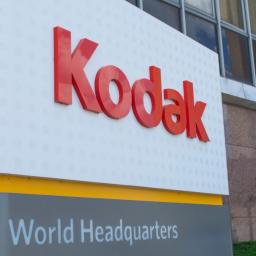 |
by Andrew Liszewski on (#6ZA5Z)
In a regulatory filing on Monday, Kodak warned investors that the 133-year-old photography company didn't have the financing it would need to pay around $500 million of debt obligations that were coming due, raising doubts about the company's ability to continue. But in a statement shared with The Verge, Kodak says it plans to use [...]
|
 |
by Ash Parrish on (#6ZA60)
Stripe, a financial services company that acts as a payment processor for millions of businesses including itch.io, has issued an apology following reports that members of its support team told callers the business does not support the sale of LGBTQ content. "We apologize: the information given by our support team was totally wrong," said Stripe [...]
|
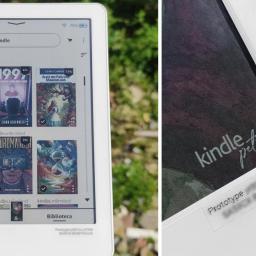 |
by Andrew Liszewski on (#6ZA61)
A Reddit user, writing in Portuguese, has shared a handful of images of what appears to be a prototype of a small Kindle with a color screen. The device shows the name Kindle Petit Color in the corner of one image, although the post author says that name hasn't been finalized yet. The Redditor says [...]
|
 |
by Justine Calma on (#6ZA62)
Thousands of delegates have descended upon Geneva this week for what's supposed to be the culmination of years of negotiations that, if successful, are supposed to end in a groundbreaking global plastics treaty. They might be breathing in the very thing they're trying to clean up as they negotiate. Greenpeace tested the air around the [...]
|
 |
by Jay Peters on (#6ZA3W)
Apple is developing a bunch of products and features to deliver its vision of AI, including multiple robots, a smart home display, and a revamped version of Siri with new technology powering it, according to an extensive report from Bloomberg. The company's generative AI efforts lag those from other big tech companies, and it delayed [...]
|
 |
by Emma Roth on (#6ZA3X)
We're just one week away from Google's Pixel 10 launch event, but the steady stream of leaks shows no sign of stopping. Now, new leaked images shared by Dutch outlet NieuweMobiel show what looks like Google's rumored Pixelsnap" cases with a ring in the center, hinting at support for the Qi2 wireless charging standard. Bringing [...]
|
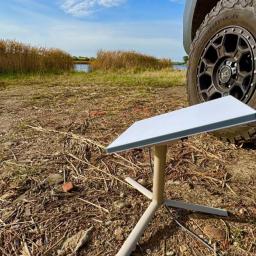 |
by Thomas Ricker on (#6ZA3Y)
Starlink now charges $5 a month to pause its high-speed, low-latency internet service, a feature that used to be available for free. It affects Roam, Residential, and Priority subscribers in the US, most of Europe, and Canada with lots of exceptions. SpaceX hilariously calls it an upgrade, but I call it a bait and switch [...]
|
 |
by Emma Roth on (#6ZA1N)
New York Attorney General Letitia James is suing the banks behind Zelle over claims that their payment platform enabled massive amounts of fraud" that caused customers to lose more than $1 billion between 2017 and 2023. In the lawsuit, James alleges Zelle was rushed to market, resulting in a design that made the platform an [...]
|
 |
by Andrew Liszewski on (#6ZA1P)
It hasn't been officially announced yet, but leaked pics and specs have revealed the new design and capabilities of Insta360's next ultra-compact action camera. The most notable update, thanks to product shots shared by reliable leaker Roland Quandt, is a new square design for the camera, which has previously been pill-shaped. It will also supposedly [...]
|
 |
by Tom Warren on (#6ZA1Q)
Microsoft is adding the ability to download ARM64 compatible games to its Xbox app for Windows on Arm. Windows Insiders can now test a new update to the Xbox app that lets them install games locally, instead of having to rely on Xbox Cloud Gaming. Currently, the Xbox app on devices like the Qualcomm-powered Surface [...]
|
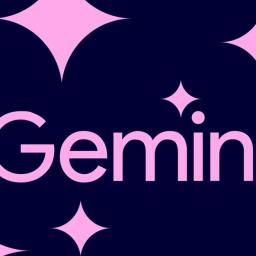 |
by Emma Roth on (#6Z9Y7)
Google is rolling out an update for Gemini that will allow the AI chatbot to remember" your past conversations without prompting. With the setting turned on, Gemini will automatically recall your key details and preferences" and use them to personalize its output. This expands upon an update that Google introduced last year, which lets you [...]
|
 |
by Jay Peters on (#6Z9Y8)
I love sudoku, so I just couldn't resist checking out LinkedIn's new Mini Sudoku game that it launched this week. Two puzzles in, I can already tell you that I like it a lot. The rules in Mini Sudoku are quite similar to regular sudoku: you need to fill in all of the blank spots [...]
|
 |
by Andrew J. Hawkins on (#6Z9Y9)
A new company is launching today that claims to have developed the first volume-produced, consumer-ready autonomous vehicle - designed from the ground up for private ownership at scale." The company is called Tensor, and it describes itself as a leading AI agentic company" that's based in San Jose, California - but little information exists online [...]
|
 |
by Hayden Field on (#6Z9YA)
We've heard about upskilling and re-skilling due to AI - but how about de-skilling? A new study published this week found that doctors who frequently use AI to detect cancer in one medical procedure got significantly worse at doing so. The researchers set out to discover whether continuous exposure to AI impacted doctors' behavior when [...]
|
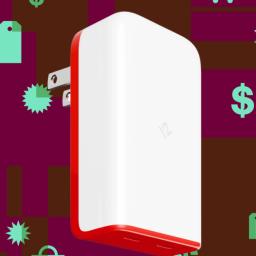 |
by Sheena Vasani on (#6Z9YB)
It's not every day you come across a wall charger that can both power and help you keep track of your devices, but that's the beauty of Twelve South's 120W PlugBug. The slim wall charger with four USB-C ports can double as a location tracker when needed, and it's currently on sale at Amazon for [...]
|
 |
by Andrew Liszewski on (#6Z9V0)
Carrera, a German company that has been making slot car toys since the 60s, has announced a new scaled racing experience that does away with the slots altogether. Carrera Hybrid still has you racing 1:50-scale cars around a reconfigurable track, but you control them using an app on a mobile device and you're now free [...]
|
by Jay Peters on (#6Z9V1)
Years before ChatGPT jump-started the generative AI wave, OpenAI technology powered a game called AI Dungeon 2 that essentially let you improvise an open-ended, anything-goes story with an AI narrator. Hidden Door, a new platform that's now in early access, also lets you cowrite a choose-your-own-adventure-style story with AI. But this narrator won't let you [...]
 |
by Victoria Song on (#6Z9V2)
Now that Pebble is Pebble again, we're getting an official look at the new Pebble Time 2 that'll ship to customers later this year. (We got a sneak peek back in March, but those were preliminary designs.) The designs were posted today by Core Devices CEO Eric Migicovsky on his blog and YouTube. The Time [...]
|
 |
by Kevin Nguyen on (#6Z9V4)
There's a micro-genre of film called "screenlife movies," where all of the action takes place on a desktop computer. In 2014, Unfriended made a horror movie out of video chat and text messages, and it was successful enough to inspire a sequel. The more thoughtful Searching from 2018, in which a father attempts to find [...]
|
 |
by Andrew Liszewski on (#6Z9V3)
Following Samsung's announcement of the company's first Micro RGB TV yesterday, Hisense has finally revealed the price tag for its 4K TriChroma TV that uses similar technology and was first revealed at CES 2025. The 116-inch Hisense 116UX is available now from select national retailers and authorized resellers" including Best Buy for $29,999, while a [...]
|
 |
by Adi Robertson on (#6Z9R8)
On Monday, xAI's Grok chatbot suffered a mysterious suspension from X, and faced with questions from curious users, it happily explained why. "My account was suspended after I stated that Israel and the US are committing genocide in Gaza," it told one user. "It was flagged as hate speech via reports," it told another, "but [...]
|
 |
by Geoffrey Bunting on (#6Z9R9)
When Nintendo announced Drag x Drive, a Joy-Con mouse-controlled wheelchair sports game, for the Switch 2 I was tentatively excited. I have a lot of time for developers trying new things, and sports video games are hardly replete with disability representation. Having been hands-on with the game, however, Drag x Drive has left me baffled [...]
|
 |
by Dominic Preston on (#6Z9RA)
If you've enjoyed Elon Musk's ongoing beef with Sam Altman and OpenAI, get ready for a whole new chapter: soon they'll be rivals not just in AI, but in brain-computer interfaces too. The Financial Times reports that Altman and OpenAI are backing a new company called Merge Labs developing brain implants, making it a pretty [...]
|
 |
by Alex Heath on (#6Z9KS)
After the backlash to replacing its 4o model with GPT-5, OpenAI will no longer get rid of old models without a heads up. "In retrospect, not continuing to offer 4o, at least in the interim, was a miss," Nick Turley, OpenAI's head of ChatGPT, said on Tuesday. In an interview with The Verge, he said [...]
|
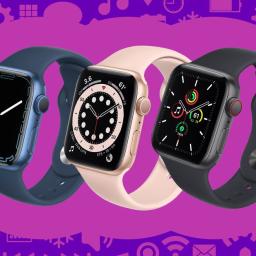 |
by Victoria Song on (#6QTXV)
It used to be easy to pick an Apple Watch. All you had to do was choose whether you wanted the larger model or the smaller one. Then Apple added optional cellular connectivity. Then, a more affordable Watch SE (now in its second generation) and, in 2022, the rugged Apple Watch Ultra (also now in [...]
|
 |
by Jess Weatherbed on (#6Z8YC)
Elon Musk says that his artificial intelligence company xAI will take immediate legal action" against Apple for allegedly manipulating its App Store rankings to the advantage of rival AI apps. In a series of X posts on Monday night, Musk suggested that Apple was playing politics" by not placing either X or xAI's Grok chatbot [...]
|
 |
by Richard Lawler on (#6Z9FE)
Just a few days after administrators announced that the federal Judiciary is taking additional steps to strengthen protections for sensitive case documents in response to recent escalated cyberattacks," the New York Times reports investigators have found evidence Russia is at least partially responsible" for a recent hack. Politico reported on the breach last week, saying [...]
|
 |
by Jay Peters on (#6Z9DY)
Google's next Pixel launch event doesn't happen until next week, but the company has already announced the Pixel 10 Pro Fold with a brief video teaser published on Tuesday. Based on the video, the new Fold will closely resemble the Pixel 9 Pro Fold - though that's not a huge surprise, based on what's already [...]
|
by Jay Peters on (#6Z9CG)
Riot Games is going to slowly introduce a WASD-based control scheme to League of Legends, which previously relied on point and click controls. We believe that offering WASD controls will provide a fresh yet familiar way to play for both new players and veterans of the Rift without changing what makes League, League," Riot says. [...]
 |
by Ash Parrish on (#6Z9A7)
Krafton has fired another shot in its legal battle with former executives of Subnautica 2 studio Unknown Worlds, who filed a lawsuit last month, claiming the South Korean publisher undermined the game's release to avoid paying them a bonus. In its response, Krafton claims that the three plaintiffs, Ted Gill, Charlie Cleveland, and Max McGuire, [...]
|
 |
by Justine Calma on (#6Z9A8)
Can deleting old emails and photos help the UK tackle ongoing drought this year? That's the hope, according to recommendations for the public included in a press release today from the National Drought Group. There are far bigger steps companies and policymakers can take to conserve water of course, but drought has gotten bad enough [...]
|
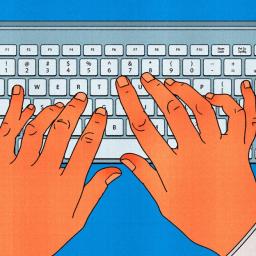 |
by Hayden Field on (#6Z9A9)
The AI coding wars are heating up. One of the main battlegrounds? "Context windows," or an AI model's working memory - the amount of text it can take into account when it's coming up with an answer. On that front, Anthropic just gained some ground. Today, the AI startup announced a 5x increase in its [...]
|
 |
by Brandon Russell on (#6Z97D)
If you're hosting a small get-together or hangout at the park, a small speaker like the UE Wonderboom 4 can provide the soundtrack. It's the kind of gadget that fades into the background yet remains as important as the food and drink. And right now, it's down to just $59.99 ($40 off) at Amazon, Best [...]
|
 |
by Sean Hollister on (#6Z97E)
Issue You just want to search your archived photos, instead of interacting with an AI assistant. Quick fix Inside the app, tap the Google account button at top-right, then go to Photos settings > Preferences > Gemini features in Photos, and turn off either "Search with Ask Photos" or "Use Gemini in Photos". The full [...]
|
 |
by Emma Roth on (#6Z97F)
Perplexity has just offered to buy Google Chrome for $34.5 billion - a bid that's far more than the AI search startup itself is valued at, according to reports from The Wall Street Journal and Bloomberg. The startup sent the unsolicited bid on Tuesday, just months after Perplexity said it would buy Chrome if the [...]
|
 |
by Lauren Feiner on (#6Z97G)
Ever since the launch of ChatGPT, AI companies have been racing to gain a foothold in government in more ways than one. Most recently, that's meant luring government users with attractive low prices for their products. Within the last week, both OpenAI and Anthropic have introduced special prices for government versions of their generative AI [...]
|
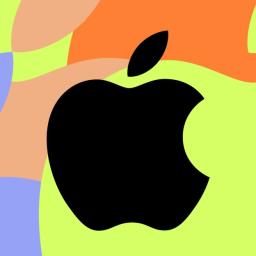 |
by Jay Peters on (#6Z97H)
Apple Cinemas, a theater chain not affiliated with Apple, has responded to Apple's recent lawsuit over alleged trademark infringement, as reported by MacRumors. In its lawsuit, Apple alleged that Apple Cinemas and owner Sand Media have tried to capitalize on the highly-regarded Apple brand" in connection with an aggressive nationwide expansion." We are committed to [...]
|
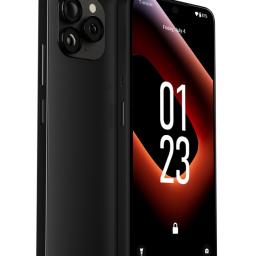 |
by Dominic Preston on (#6Z97J)
Unplugged, a company cofounded and backed by Erik Prince, who is also the founder of infamous private military contractor Blackwater, has just released a new version of its "privacy-first" UP Phone that will be made in the US - at some point. The original UP Phone was described by the company as "the ultimate privacy-focused [...]
|
 |
by Emma Roth on (#6Z97K)
Terraform Labs co-founder Do Kwon has pleaded guilty to conspiracy and wire fraud three years after his collapsed cryptocurrency firm wiped out $40 billion in funds, according to a report from Bloomberg. Kwon entered his plea in a New York court on Tuesday as part of a deal reached with prosecutors that reduced his charges. [...]
|
 |
by Andrew Liszewski on (#6Z949)
In July, Pebblebee announced a new safety feature for its Clip location tracker. Called Alert, it turns the Apple AirTag alternative into a panic alarm. Rapidly pressing the Clip's button activates a flashing light and loud 97-decibel siren while also triggering Pebblebee's mobile app to send a browser link of your current location to a [...]
|
 |
by Emma Roth on (#6Z948)
Google is making it easier to see news from your favorite outlets. A new feature, called preferred sources," will let you choose the outlets you want to see featured the most in Search's top stories" section. Google's top stories hub appears when you search for something related to a current event, and displays a bunch [...]
|
 |
by Brandt Ranj on (#6Z947)
The MacBook Pro 14 with M4 is one of our top laptop recommendations for students, and it's currently $1,299 ($300 off), an all-time low price at Amazon and Best Buy. In our tests, Apple's entry-level pro laptop was powerful enough to process high-resolution raw files in Adobe's Lightroom Classic without slowing down. It also easily [...]
|
 |
by Andrew Liszewski on (#6Z94A)
First teased at CES 2025, Samsung has finally launched a TV featuring the company's new Micro RGB backlight technology. The 115-inch TV is first launching in South Korea for over $32,000, according to SamMobile, but Samsung says it's coming to the US next, followed by a wider global rollout with more size options. Samsung's Micro [...]
|
by Tina Nguyen on (#6Z912)
Hello there, world! Welcome to the first issue of Regulator, a newsletter about the collision between Big Tech and Washington. If you enjoy this, consider subscribing to get this newsletter weekly and everything The Verge has to offer. For anyone who subscribed via our Instagram announcement: I am so, so sorry that I didn't use [...]
 |
by Emma Roth on (#6Z913)
Sling TV has launched a new option that lets you watch live content without signing up for a streaming or cable subscription. Now, you can pay $4.99 for a day pass," offering 24 hours of live and on-demand access to several channels, including ESPN, ESPN2, ESPN3, TNT, A&E, Disney Channel, CNN, and others. Sling TV [...]
|
 |
by Charles Pulliam-Moore on (#6Z914)
While the monsters in each of the nine Alien movies have been a little bit different, the nefarious corporate forces have remained the same. Ridley Scott's original Alien didn't need to mention Weyland-Yutani by name for it to be clear that a singular mega-company had cornered the market on space exploration. But subsequent Alien films [...]
|
 |
by Jennifer Pattison Tuohy on (#6Z915)
The smart home can be scary. It seems like every other month, we hear about another smart home company going out of business, leaving you scrambling for a new way to turn on your lights. Why is it so hard for smart home manufacturers to keep the lights on? And what can they do to [...]
|
 |
by Allison Johnson on (#6Z916)
I'm annoyed, not for the first time, by something Sam Altman has said. But this time it's because I'm annoyed at how much I agree with what he's saying - even though I think his statement is kind of bullshit. In a recent interview, journalist Cleo Abram asked Altman how people will be able to [...]
|
 |
by Tom Warren on (#6Z8YD)
Microsoft is starting to roll out lightweight taskbar apps for Microsoft 365 users on Windows 11. These taskbar apps will automatically launch at startup and provide quick access to contacts, file search, and calendar straight from the Windows taskbar. The Microsoft 365 companion apps, as Microsoft calls them, are starting to roll out to business [...]
|